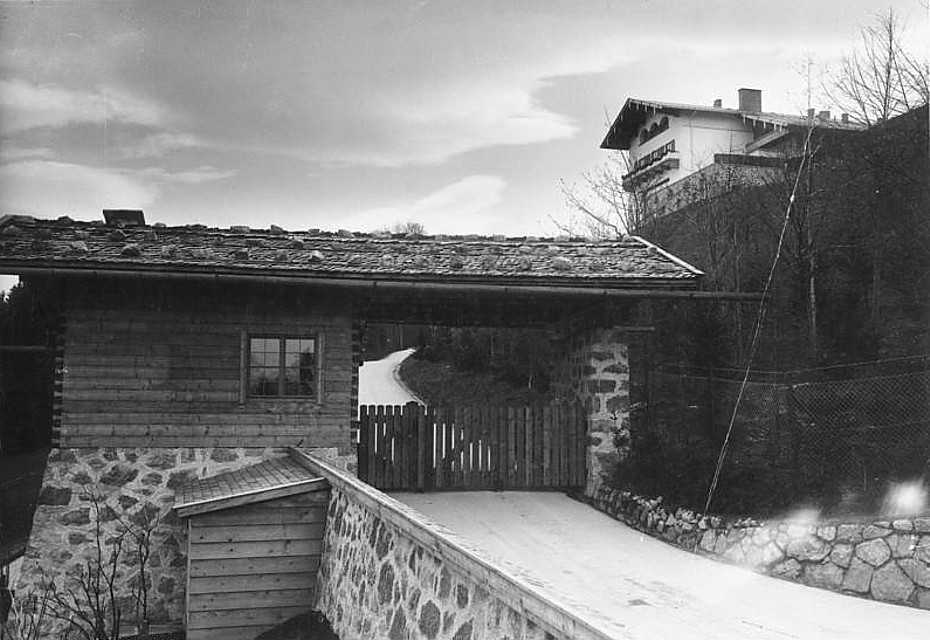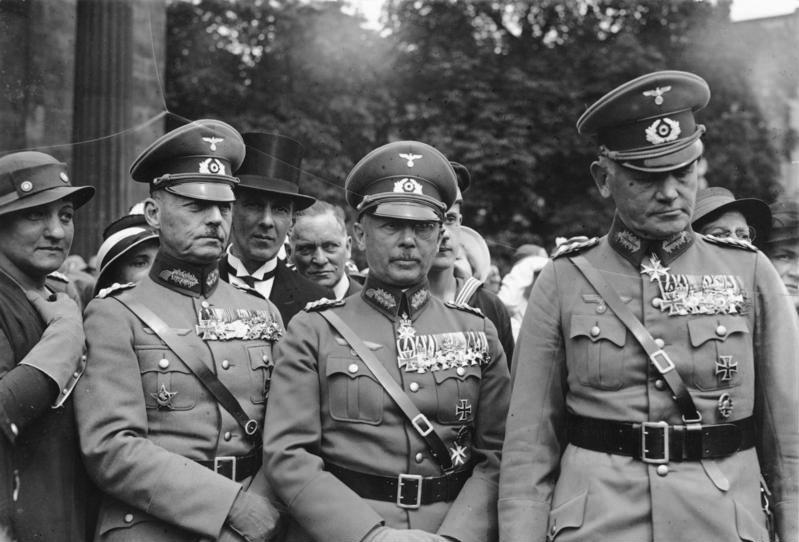|
Wolfsschlucht II
'' Führerhauptquartier'' Wolfsschlucht II (English: ''Wolf Canyon'') or W2 was the codename used for one of Adolf Hitler's World War II Western Front military headquarters located in Margival, 10 km northeast of Soissons in the department of Aisne in France. It was one of many Führer Headquarters throughout Europe but was used only once by Adolf Hitler, June 16 and 17, 1944 for a meeting with Field Marshals Erwin Rommel and Gerd von Rundstedt about the Normandy Front. At the meeting, Rommel advocated, among other things, ending the war, to Hitler's fury. During the meeting, an allied air raid forced the group to descend into a bomb shelter. Later, a malfunctioning V-1 flying bomb struck the site, after which Hitler departed for Germany, never to return.Antony Beevor, "D-day: the Battle for Normandy", Penguin 2014, Part 7, Chapter 15 See also *Führer Headquarters The ''Führer'' Headquarters (german: Führerhauptquartiere), abbreviated FHQ, were a number of offici ... [...More Info...] [...Related Items...] OR: [Wikipedia] [Google] [Baidu] |
Erwin Rommel
Johannes Erwin Eugen Rommel () (15 November 1891 – 14 October 1944) was a German field marshal during World War II. Popularly known as the Desert Fox (, ), he served in the ''Wehrmacht'' (armed forces) of Nazi Germany, as well as serving in the ''Reichswehr'' of the Weimar Republic, and the army of Imperial Germany. Rommel was a highly decorated officer in World War I and was awarded the ''Pour le Mérite'' for his actions on the Italian Front. In 1937, he published his classic book on military tactics, '' Infantry Attacks'', drawing on his experiences in that war. In World War II, he commanded the 7th Panzer Division during the 1940 invasion of France. His leadership of German and Italian forces in the North African campaign established his reputation as one of the ablest tank commanders of the war, and earned him the nickname ''der Wüstenfuchs'', "the Desert Fox". Among his British adversaries he had a reputation for chivalry, and his phrase "war without hate" ... [...More Info...] [...Related Items...] OR: [Wikipedia] [Google] [Baidu] |
World War II Sites Of Nazi Germany
In its most general sense, the term "world" refers to the totality of entities, to the whole of reality or to everything that is. The nature of the world has been conceptualized differently in different fields. Some conceptions see the world as unique while others talk of a "plurality of worlds". Some treat the world as one simple object while others analyze the world as a complex made up of many parts. In '' scientific cosmology'' the world or universe is commonly defined as " e totality of all space and time; all that is, has been, and will be". '' Theories of modality'', on the other hand, talk of possible worlds as complete and consistent ways how things could have been. ''Phenomenology'', starting from the horizon of co-given objects present in the periphery of every experience, defines the world as the biggest horizon or the "horizon of all horizons". In ''philosophy of mind'', the world is commonly contrasted with the mind as that which is represented by the mind. ''T ... [...More Info...] [...Related Items...] OR: [Wikipedia] [Google] [Baidu] |
Führer Headquarters
The ''Führer'' Headquarters (german: Führerhauptquartiere), abbreviated FHQ, were a number of official headquarters used by the Nazi leader Adolf Hitler and various other German commanders and officials throughout Europe during the Second World War.Raiber, Richard, ''Guide to Hitler's Headquarters, After The Battle, No. 19'', Introduction and p. 1. The last one used, the ''Führerbunker'' in Berlin, where Hitler committed suicide on 30 April 1945, is the most widely known headquarters. Other notable headquarters are the ''Wolfsschanze'' (Wolf's Lair) in East Prussia, where Claus von Stauffenberg in league with other conspirators attempted to assassinate Hitler on 20 July 1944, and Hitler's private home, the '' Berghof'', at Obersalzberg near Berchtesgaden, where he frequently met with prominent foreign and domestic officials. Introduction At the beginning of World War II there were no permanent headquarters constructed for the ''Führer''. Hitler visited the frontlines usin ... [...More Info...] [...Related Items...] OR: [Wikipedia] [Google] [Baidu] |
V-1 Flying Bomb
The V-1 flying bomb (german: Vergeltungswaffe 1 "Vengeance Weapon 1") was an early cruise missile. Its official Reich Aviation Ministry () designation was Fi 103. It was also known to the Allies as the buzz bomb or doodlebug and in Germany as ( cherry stone) or ( maybug). The V-1 was the first of the ( V-weapons) deployed for the terror bombing of London. It was developed at Peenemünde Army Research Center in 1939 by the at the beginning of the Second World War, and during initial development was known by the codename "Cherry Stone". Because of its limited range, the thousands of V-1 missiles launched into England were fired from launch facilities along the French ( Pas-de-Calais) and Dutch coasts. The Wehrmacht first launched the V-1s against London on 13 June 1944, one week after (and prompted by) the successful Allied landings in France. At peak, more than one hundred V-1s a day were fired at southeast England, 9,521 in total, decreasing in number as sites were ... [...More Info...] [...Related Items...] OR: [Wikipedia] [Google] [Baidu] |
Wolfsschlucht II 1 , located in Margival, France
{{disambiguation ...
Wolfsschlucht (Wolf's Gorge) was the codename for two of Adolf Hitler's military headquarters during the Second World War: * Wolfsschlucht I, located in Brûly-de-Pesche, Belgium * Wolfsschlucht II '' Führerhauptquartier'' Wolfsschlucht II (English: ''Wolf Canyon'') or W2 was the codename used for one of Adolf Hitler's World War II Western Front military headquarters located in Margival, 10 km northeast of Soissons in the department ... [...More Info...] [...Related Items...] OR: [Wikipedia] [Google] [Baidu] |
Operation Overlord
Operation Overlord was the codename for the Battle of Normandy, the Allied operation that launched the successful invasion of German-occupied Western Europe during World War II. The operation was launched on 6 June 1944 (D-Day) with the Normandy landings. A 1,200-plane airborne assault preceded an amphibious assault involving more than 5,000 vessels. Nearly 160,000 troops crossed the English Channel on 6 June, and more than two million Allied troops were in France by the end of August. The decision to undertake a cross-channel invasion in 1944 was taken at the Trident Conference in Washington in May 1943. General Dwight D. Eisenhower was appointed commander of Supreme Headquarters Allied Expeditionary Force, and General Bernard Montgomery was named commander of the 21st Army Group, which comprised all the land forces involved in the invasion. The coast of Normandy of northwestern France was chosen as the site of the invasion, with the Americans assigned to land at sectors ... [...More Info...] [...Related Items...] OR: [Wikipedia] [Google] [Baidu] |
Gerd Von Rundstedt
Karl Rudolf Gerd von Rundstedt (12 December 1875 – 24 February 1953) was a German field marshal in the '' Heer'' (Army) of Nazi Germany during World War II. Born into a Prussian family with a long military tradition, Rundstedt entered the Prussian Army in 1892. During World War I, he served mainly as a staff officer. In the inter-war years, he continued his military career, reaching the rank of Colonel General () before retiring in 1938. He was recalled at the beginning of World War II as commander of Army Group South in the invasion of Poland. He commanded Army Group A during the Battle of France, and requested the Halt Order during the Battle of Dunkirk. He was promoted to the rank of Field Marshal in 1940. In the invasion of the Soviet Union, he commanded Army Group South, responsible for the largest encirclement in history, the Battle of Kiev. He was relieved of command in December 1941 after authorizing the withdrawal from Rostov, but was recalled in 1942 and ap ... [...More Info...] [...Related Items...] OR: [Wikipedia] [Google] [Baidu] |
Aisne
Aisne ( , ; ; pcd, Ainne) is a French department in the Hauts-de-France region of northern France. It is named after the river Aisne. In 2019, it had a population of 531,345.Populations légales 2019: 02 Aisne INSEE Geography  The department borders (to the north),
The department borders (to the north),
|
Soissons
Soissons () is a commune in the northern French department of Aisne, in the region of Hauts-de-France. Located on the river Aisne, about northeast of Paris, it is one of the most ancient towns of France, and is probably the ancient capital of the Suessiones. Soissons is also the see of an ancient Roman Catholic diocese, whose establishment dates from about 300, and it was the location of a number of church synods called "Council of Soissons". History Soissons enters written history under its Celtic name, later borrowed into Latin, Noviodunum, meaning "new hillfort", which was the capital of the Suessiones. At Roman contact, it was a town of the Suessiones, mentioned by Julius Caesar (''B. G.'' ii. 12). Caesar (''B.C.'' 57), after leaving the Axona (modern Aisne), entered the territory of the Suessiones, and making one day's long march, reached Noviodunum, which was surrounded by a high wall and a broad ditch. The place surrendered to Caesar. From 457 to 486, under Aegidiu ... [...More Info...] [...Related Items...] OR: [Wikipedia] [Google] [Baidu] |
Margival
Margival () is a commune in the Aisne department in Hauts-de-France in northern France. It is located northeast of Soissons. History During World War II, the '' Führerhauptquartier'' Wolfsschlucht II, one of the Adolf Hitler's Western Front military headquarters, was built there. Population See also *Communes of the Aisne department The following is a list of the 799 communes in the French department of Aisne. The communes cooperate in the following intercommunalities (as of 2020):Communes of Aisne Aisne communes articles needing t ... [...More Info...] [...Related Items...] OR: [Wikipedia] [Google] [Baidu] |






